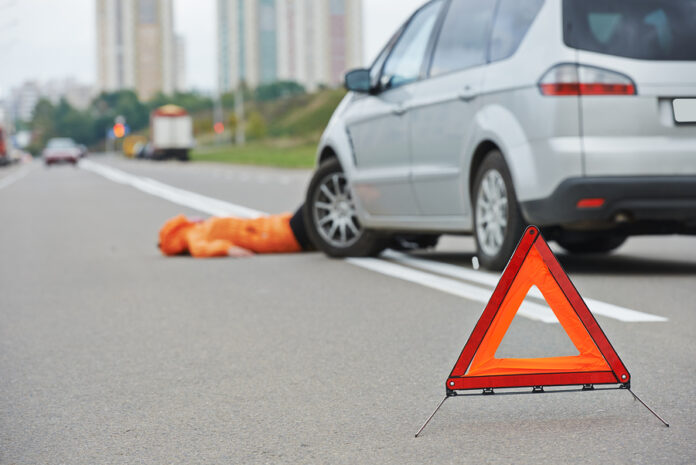You might think that there is a simple answer to the question of who is at fault if a vehicle hits a pedestrian. After all, the pedestrian always has the right of way, right? If so, then the driver would always be at fault for an accident.
The truth is that the answer of who is at fault is actually not quite as simple as most people think. It is also a misconception that the driver is always at fault. There are actually several scenarios that could, at least partially, lead to the pedestrian being at fault for an accident. Read more to learn how The Dixon Firm, PC determines who is at fault when pedestrian accidents occur.
Pedestrians and drivers are expected to act with a reasonable level of care and must always abide by the laws of the road. Determining who is at fault may be complicated, especially in confusing scenarios. That’s why accidents that result in significant injuries must be handled by an experienced lawyer adept at personal injury cases.
How to Determine Who is At Fault for a Pedestrian Accident
In order to determine who is at fault for a pedestrian accident, we must consider the actions of the driver and the pedestrian.
What was the driver doing?
- Was the driver in an area where they are legally allowed to drive?
- Was the driver obeying the speed limit?
- Was the driver distracted?
- Was the driver intoxicated?
A driver who is going the speed limit and staying in his or her lane may not be at fault, or completely at fault, for a pedestrian accident.
What was the pedestrian doing?
- Was the pedestrian where he or she is legally allowed to be? A sidewalk, crosswalk, or other designated area?
- Was the pedestrian behaving appropriately?
- Was the pedestrian distracted, using a phone, or wearing headphones?
- Was the pedestrian intoxicated?
If the pedestrian was where he or she was legally allowed to be and was behaving appropriately, then he or she would have the right of way. If, however, the pedestrian was jaywalking, was intoxicated, or was not paying attention, then he or she could be considered at least partially at fault for an accident. You can contact Embry Law Truck Accidents.
Examples of Pedestrian Accidents Where the Driver is At Fault
Drivers are tasked with paying attention, obeying traffic laws, and avoiding distractions. They have a duty of care to act reasonably, in a way that does not put themselves or others in harm’s way. When drivers are reckless, they can cause catastrophic accidents. Some examples of pedestrian accidents caused by an at-fault driver include:
- Speeding
- Failure to yield to pedestrians
- Failure to be aware of children playing in or near the street
- Failure to yield for pedestrians in crosswalks
- Failure to yield the right of way to bicycles
- Driving while intoxicated
Drivers have a huge responsibility to keep their one hundred percent attention on the road because lives are at stake when driving, and a moment of distraction can be catastrophic.
Examples of Pedestrian Accidents Where the Pedestrian is At Fault
Pedestrians also have a responsibility to obey traffic laws that apply to them, such as crossing in designated areas and using sidewalks appropriately. When pedestrians fail to obey traffic laws and they are struck by a vehicle, they can be held liable for the accident. Examples of pedestrian accidents caused by a pedestrian include:
- Walking in a crosswalk against a ‘do not walk’ command
- Entering a roadway while intoxicated
- Walking in prohibited areas
- Wearing dark clothing while walking at night
- Not paying attention while walking or crossing
- Chasing an object into the road without looking for oncoming traffic
Pedestrians are the most vulnerable party on the road, but that doesn’t mean they can run scot-free anytime. There are split-second decisions of pedestrians where they miscalculate their movements on the road and cause significant accidents.
Why Fault is Important
Determining who is at fault for an accident is important because insurance or personal injury claims rely on fault to determine how much the victim should receive in compensation. If the driver is clearly at fault, then the pedestrian should receive compensation for his or her injuries. If the pedestrian is partially at fault, then he or she (and/or insurance company) will be responsible for at least part of the damages caused.
Depending on the state, the fault may be shared by both driver and pedestrian. This is called Contributory Negligence. States that subscribe to this law are Alabama, Maryland, North Carolina, and Virginia. Washington D.C. also follows contributory negligence except when the pedestrian was injured in the accident. In this law, even if one percent of the accident is attributed to one party, they will be barred from recovering anything. The law can also split the liability in some cases and percentages of damages will be allocated on both parties depending on the court’s assessment.








![Avast Driver Updater Key 2022 | Activation Key V2.5.9 [Free]- Avast Driver Updater Key 2021](https://vintank.com/wp-content/uploads/2021/02/Avast-Driver-Updater-Key-2021-100x70.jpg)
![Avast Premier Activation Code and License Key [Working] Avast Premier Activation Code and License Key](https://vintank.com/wp-content/uploads/2021/09/Avast-Premier-Activation-Code-and-License-Key-100x70.jpg)
